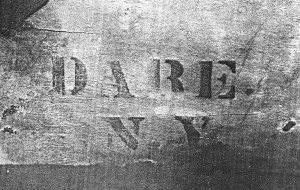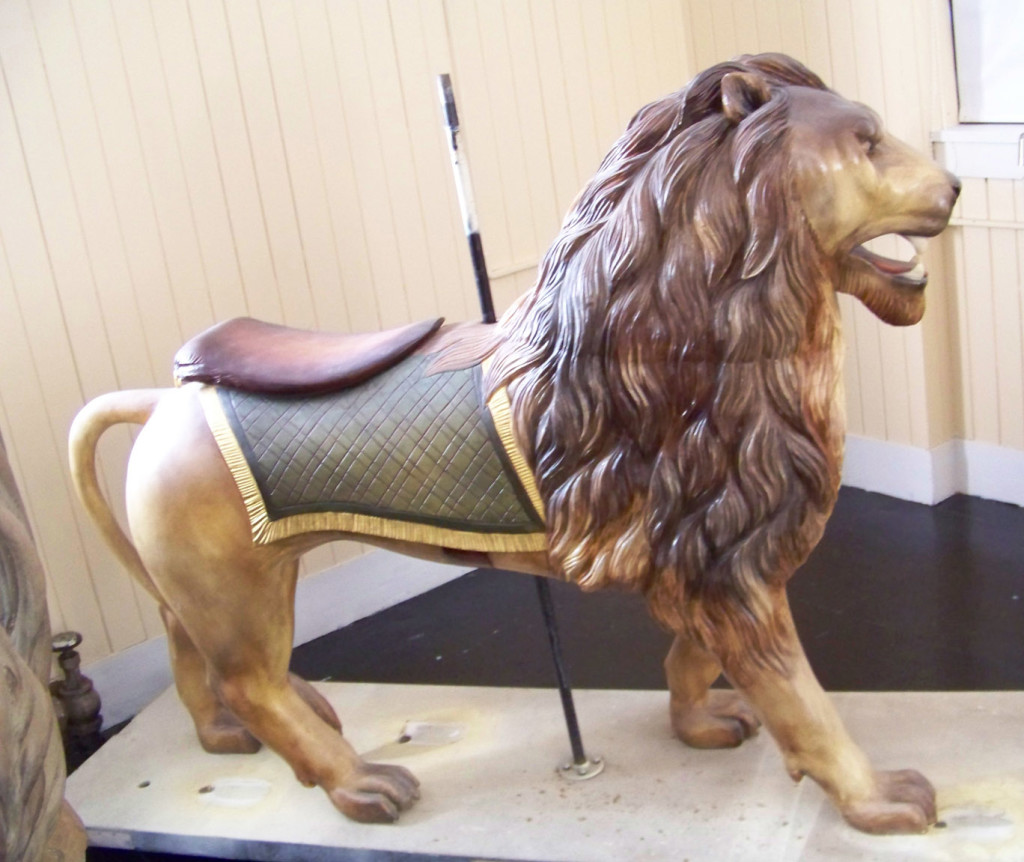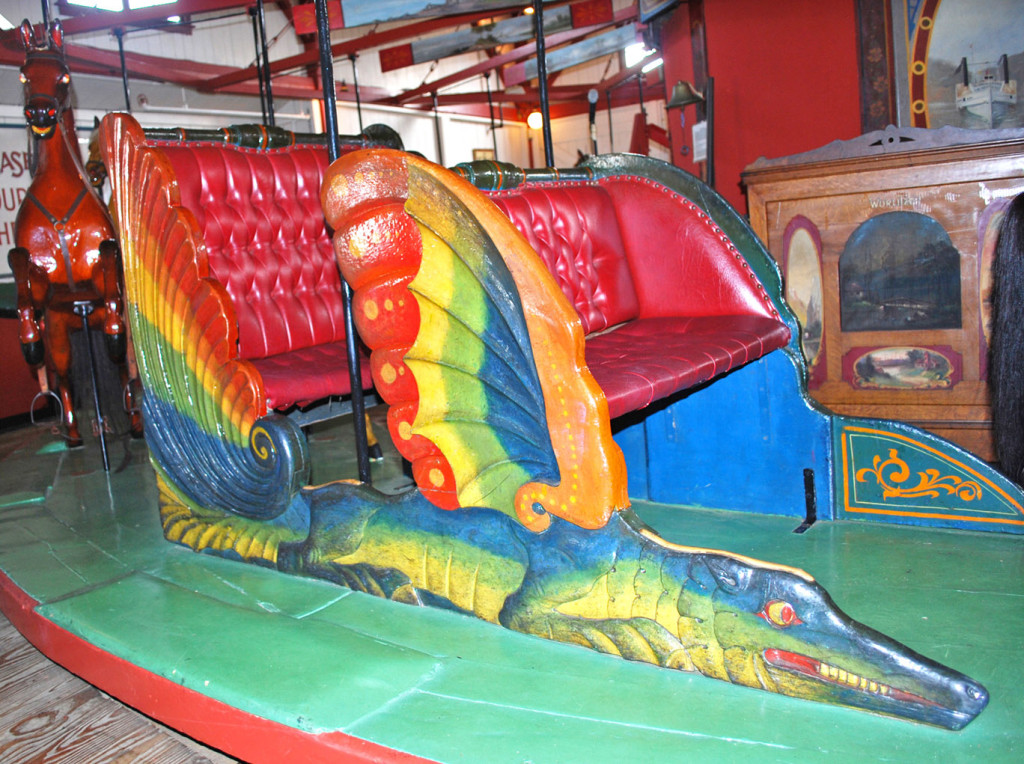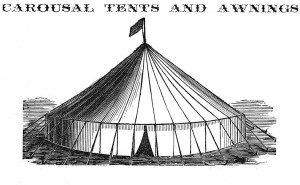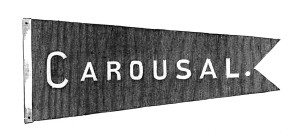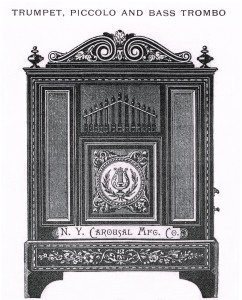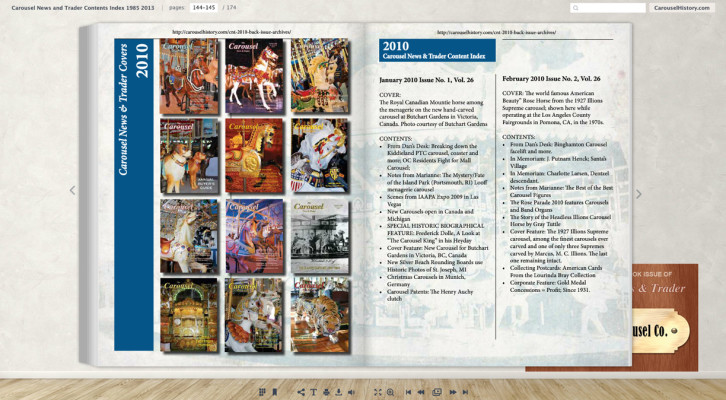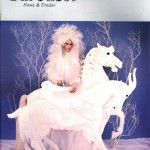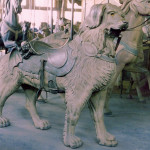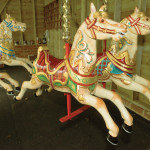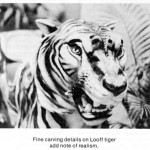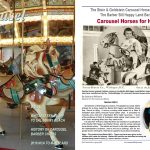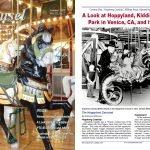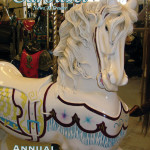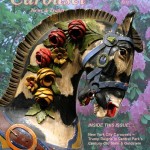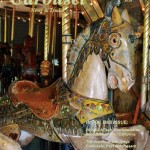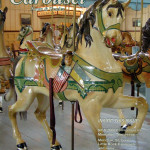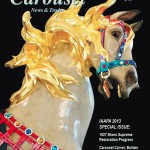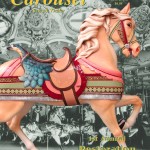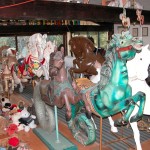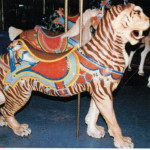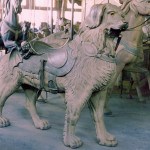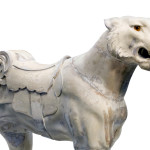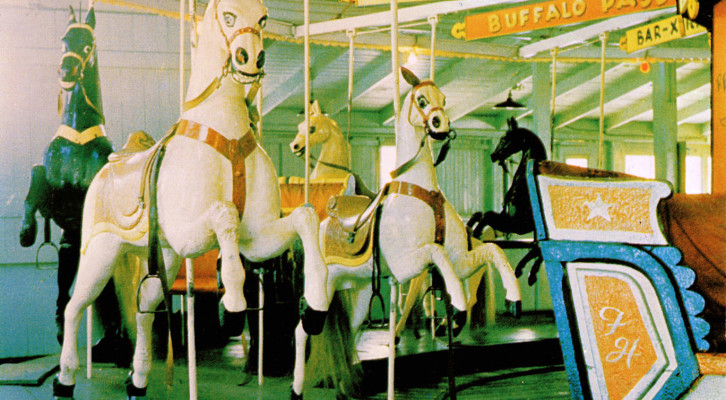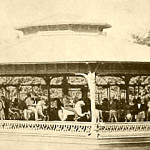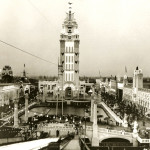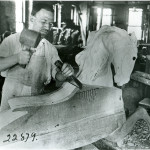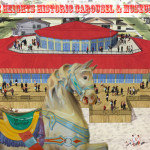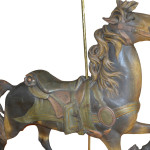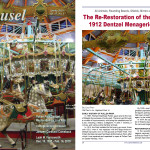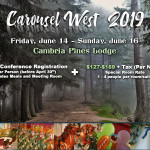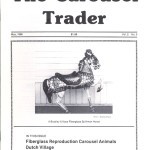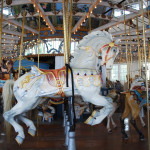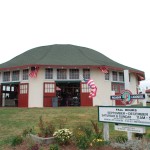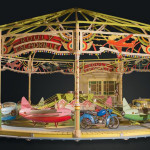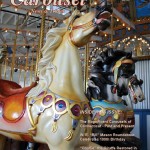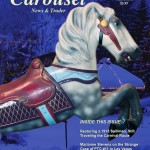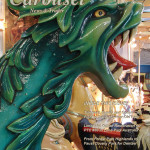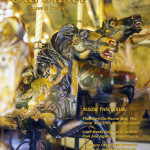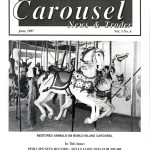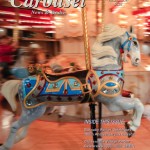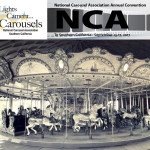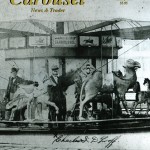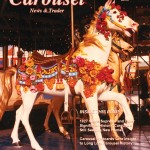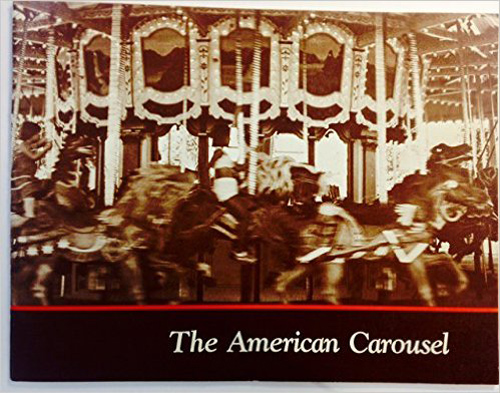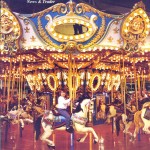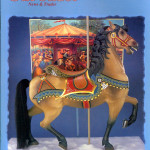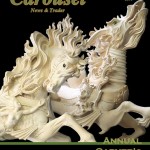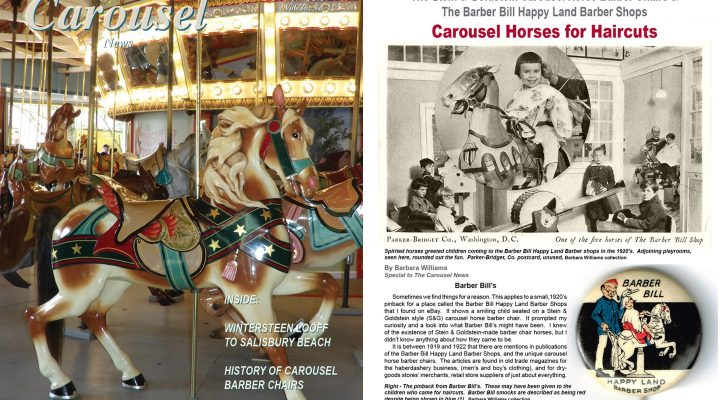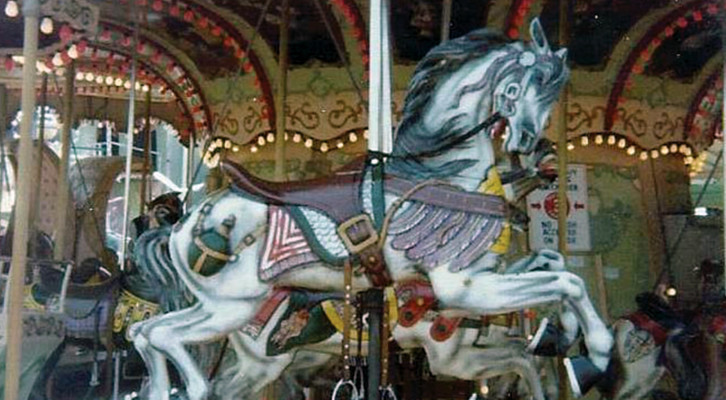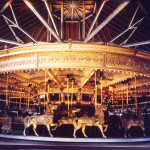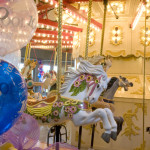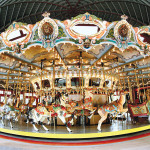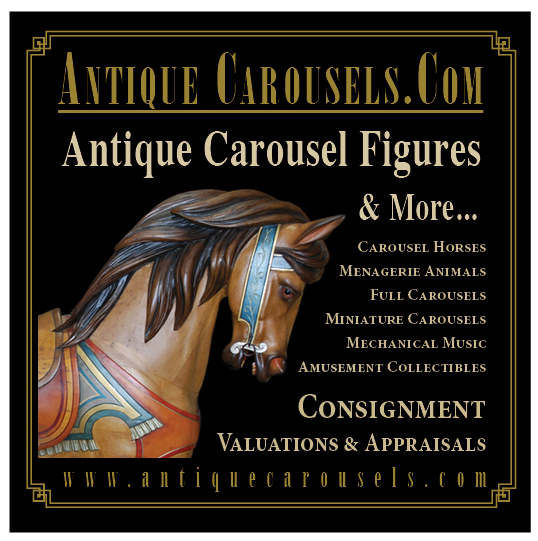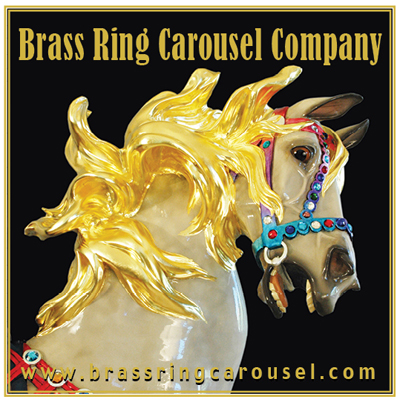Part 2 – History of The New York Carousal Manufacturing Co. – 1889 to ca. 1898
PART 1 PART 2 PART 3
Carousel History Feature – American Carousel Pioneers – Andrew Christian and Charles Dare
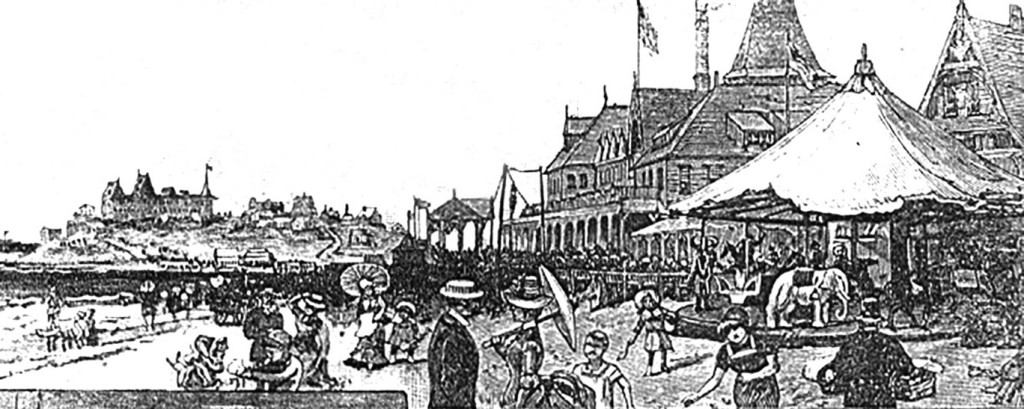
A Dare with a Swinging Platform was at Nantasket Beach, Massachusetts, Harper’s Weekly, Vol. XXXI, No. 1595, 1887. Fred and Mary Fried Archive, American History Museum, Smithsonian
The New York Carousal Manufacturing Company –
1889 to circa 1898
The New York Carousal Manufacturing Company, managed by Dare, was formed in January, 1889 and acquired the assets of The C.W.F. Dare Company in early 1890. (24)
The New York Carousal Manufacturing Company is listed in Lain’s Brooklyn Business Directory for the years 1890 – 1891. There is no listing for the company in the 1891 – 1892 directory. The company is in the 1893 – 1894 and 1894 – 1895 directories with Dare listed as the Manager. As mentioned earlier, Charles Dare passed away in 1896.
A catalog of the New York Carousal Manufacturing Company is in the Fred Fried archive at the Smithsonian. It is not dated and it is incomplete. The carousel and carousel figure offerings in this catalog are the same as in The C.W.F. Dare Company catalog with slight prices increases in the New York Carousel Manufacturing Company catalog being the only differences.
Dare’s Carvers Strike in 1892
An extraordinary article was found in The Sun from June 29, 1892 (29) about Dare’s carvers going on strike. In addition to adding to the newly-found documentation about Dare presented in our article, it is very insightful as to what working as a carver of carousel animals was like at that time. Previously, we knew that the carousel factories were located in industrial areas, that they were cold in the winter and undoubtedly uncomfortably warm in the summer. Some carvers worked full-time, some were seasonal. Animal parts were made separately – heads by the masters, legs by apprentices. Finishers did the sanding to complete the figures. In the article below, we learn that Dare’s carvers were responsible for the entire figures. We also learn, at least in the case at the Dare factory, that regardless of coveted skills, it was a precarious job to have.
If the carvers were paid $10 per 10-inch lion, with retail prices for them being between $16 and $20, there was a 60 to 100% profit. So, while the carvers barely eked out a living producing carousel animals, the company did well. We don’t know how the strike issues were resolved, but the year of the strike – 1892 – coincides with the surfacing of a new carousel management company (the American Carousel Company) that may or may not be associated with Dare (see end of New York Carousel Manufacturing Company section).
The Carousel Business (excerpt from reference 29)
A Strike of Men Who Turn Out Horses, Lions, Elephants and Donkeys
There is a strike in the factory of the New York Carrousel Company at 234, 236 and 238 Kent Avenue, Williamsburgh. Early on Monday morning of last week two of the wood carvers, the strikers say, came into the factory a few minutes late, and found their benches occupied by new men. They were told that they couldn’t go to work that day, but might come around on Tuesday. Then all the other carvers in the place put on their coats and walked out.
“We work on piecework”, said a striker. “We got $4 for every horse we make, but we don’t get paid for a horse that is not complete. The work ends Friday night, and if a man has four horses completed then he gets $16 wages. But, owing to Manager Dare’s practice of putting extra men at the benches of the regulars, the latter are often put in very hard straits for money. In making the horses a man would begin by making four heads on Monday, and then working on the bodies on Tuesday and Wednesday. On Thursday, he’d put on the ears and legs and work at the finishing of them. But, suppose he had his four horses already with the exception of the legs on Thursday night. Friday morning, he’d get down to the shop, say two minutes late. He would find another man in his place. That week he wouldn’t be allowed to finish his four horses.
William Menken, who is managing the strike on behalf of the men said, “The carrousel business is monopolized by few persons. The manufacturers get good prices, asking all the way from $500 to $4,000 for them. An ordinary picnic ground carrousel, thirty feet in diameter, one that seats thirty-two riders costs $1,000. Such a carrousel has eight twelve-inch horses, a lion, an elephant, a camel, a reindeer, two donkeys, two double-seat dragon chariots and ten ten-inch horses. The manufacturers make a big profit and pay small wages. In the first place, the work men get $4 for every horse they turn out, they get $10 apiece for lions, but a man can only turn out one lion a week. Elephants are even worse than lions for you can scarcely make spending money turning out elephants. They pay pretty fair prices for camels, $7 apiece, for a good workman can make three camels a week. A fellow can make as many donkeys as he can horses and the prices paid for them run the same. Some men prefer to work on donkeys, but the majority would rather turn out the ordinary, everyday horse for $4. As for reindeer, the prices paid for turning them out might suit a single man, but a married man could never support a wife on them. He couldn’t earn over $8 per week making deer, while he might make all the way from $12 to $24 on horses. In conclusion let me say that the strikers will never go back to the carrousel factory unless Mr. Dare changes his rule.”
Manager Dare says in effect merely that the strike is an outrage.
End of the New York Carousel Manufacturing Company
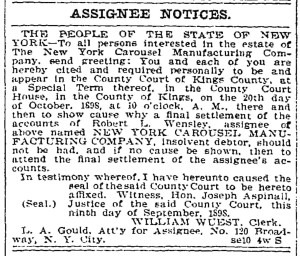
What appears to be the end of the New York Carousal Manufacturing Company, The Brooklyn Eagle, September 24, 1898.
Two years after Dare’s death, his New York Carousal Manufacturing Company is insolvent. We were unable to find out who ran the company between 1896 and 1898. In Dare’s obituary (13), it is said that he was President of the American Carousel Company. We found nothing in that name associated with Dare and noted that his previous positions were described as being “Manager”. However, we did find that the American Carrousel Co., New York, N.Y incorporated on June 29, 1892 with a stock value of $250,000 as a business “maintaining carrousels, merry-go-rounds, etc.” (30) Shortly thereafter on July 25th, the same company applied for permission to operate merry-go-rounds in Central, East River, Mount Morris and Tompkins Square Parks. (31)
Dare was said to have a daughter living in Paris. (13) In other news accounts in reference to Dare is mention of the sudden death of his wife, Phebe A. Folk, at age 31, on October 30, 1871. (32)
Charles W.F. Dare died on April 1, 1896 from apoplexy, which is a term formerly associated with having a stroke. (13)
Hobby Horses
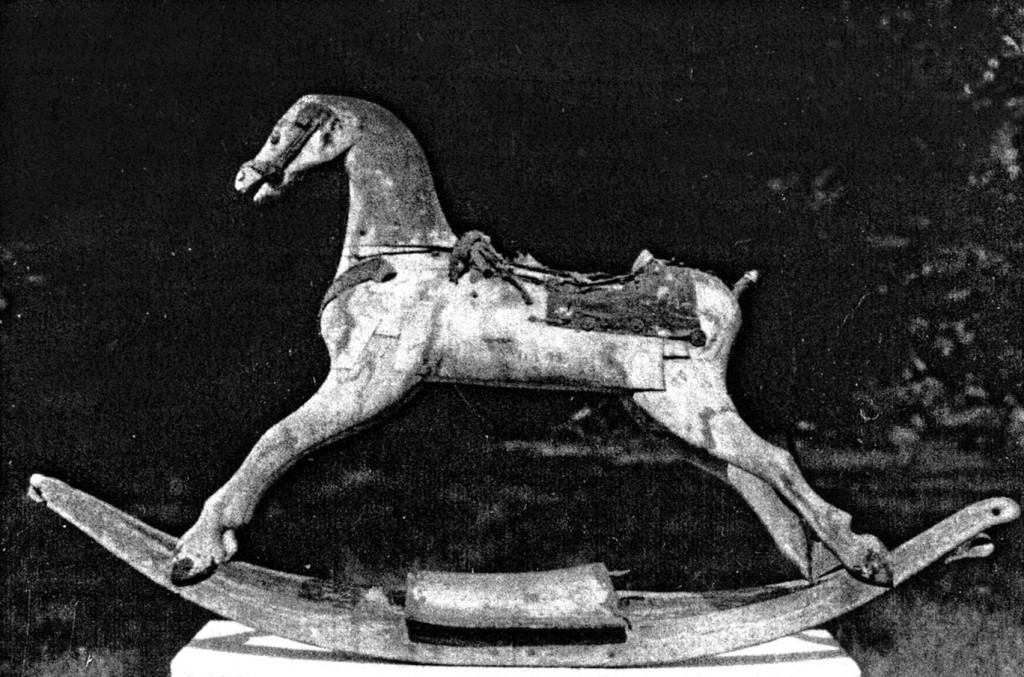
A traditional bow rocking horse made by Dare with stencil ID on the belly. It was brought to Harriet Moore, savior of the Watch Hill, Westerly, Rhode Island Dare carousel, in 1975 for identification. Fred Fried assisted in its authentication. Fred and Mary Fried Archive, American History Museum, Smithsonian
The use of the term “hobby horse” appears often enough during the late 1800’s that we wondered if it applied to carousel horses as well as rocking horses. The “hobby horse” jargon of the day did refer to carousel horses in at least some instances, but perhaps not all. The following are the “hobby horse(s)” references we found, beginning with the Christian and Hoffmire et al. businesses.
As mentioned earlier, the 1866 New York Times article (5) was about a fire in Christian’s hobby horse manufactory.
Lain’s 1867 Brooklyn Business Directory lists Dare as a maker of “hobby horses”.
In the 1871 Brooklyn City Directory, Christian is listed under “Hobby Horses”.
The minutes of the June 23, 1873 meeting of the Board of Commissioners (11), it refers to “the repair of the hobby horses on the carousel”.
In 1874, Dare’s Letterhead reads, in part, “Hobby Horses”.
“There are swings, hobby horses and play greens….” Referring to Central Park, NY. (33)
“A Carousal. For the sporting of hobby horses in a gravel concourse not far from the plaza entrance.” Referring to Prospect Park, NY. (34)
“On the Carousel in the children’s playground …were the hobby horses…” Referring to Prospect Park, NY. (35)
“Drunken Rowdies…destroy the revolving hobby horses and swings with axes “. (36)
“A few steps north of the swings is “The Carrousel” a circular building, fitted up with hobby horses….” Referring to Central Park, NY. (37)
“No Expensive Hotels but the Hobby Horses at Brighton (New York)….from the steeplechase hobby horses to Loop the Loop, you can get them all for the sum of one dime…” (38)
“Hobby Horse Pioneers” – Gottfried Bungarz, with background information sent in by “A Grandson”. (39)
We also remembered that William Dentzel was nicknamed “Hobby Horse Bill”.
Dare’s Carousels – Three Styles
Dare had three styles of carousels that he seemed to offer throughout the duration of his carousel business. As mentioned earlier, were no significant changes in the carousels other than slight price increases between the circa 1884 (The C.W.F. Dare Company) and the circa 1890 catalog (New York Carousal M’F’G Company). The animals pictured in the two catalogs representing the two businesses were the same.
The three styles of carousel advertised in Dare’s catalogs are –
Swinging Carousel with no Platform – suspended, hanging horses
Carousel with a Swinging Platform – stationary animals
Galloping Horse Carousel – jumping pose horses on rockers
Swinging Carousel with No Platform
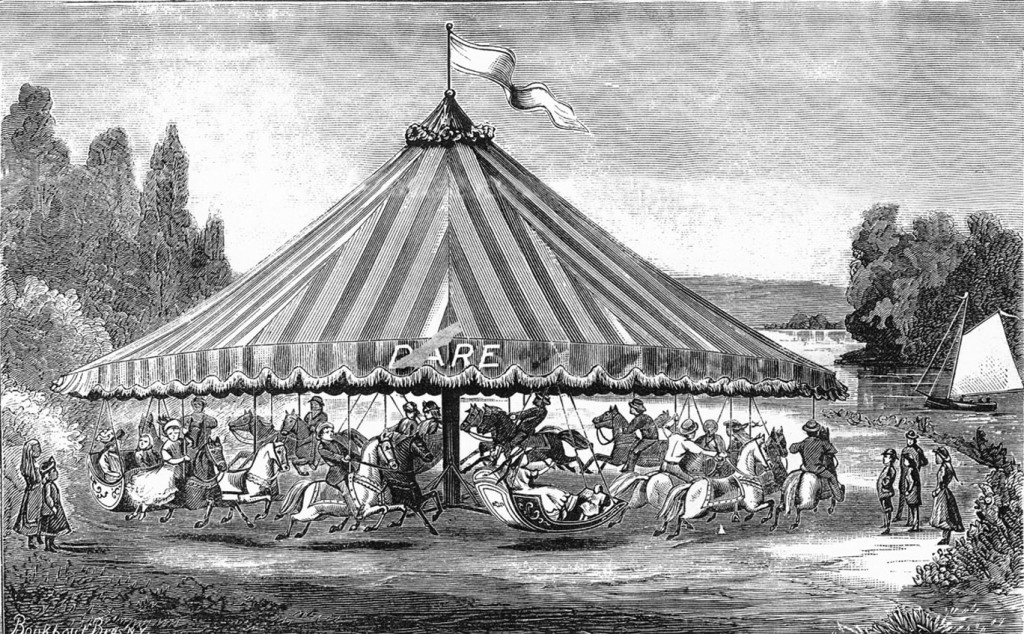
Image of Swinging Carousel with No Platform from the circa 1884 catalog by The C.W.F. Dare Company. Fred and Mary Fried Archive, American History Museum, Smithsonian
There are 3 models of this style in the circa 1884 catalog, the smallest being 20 feet in diameter with 8 horses at a cost of $425 to $475. It was hand-powered. The largest model is 26 feet in diameter with 16 horses plus 2 double chariots at a cost of $550 to $650. It was either hand or horse-powered. Menagerie animals were available at an additional cost of $5 to $8 each.
In the New York Carousal Manufacturing Company catalog, circa 1890, the swinging carousel line has expanded with a total of 5 models including a smaller hand-powered version with 4 horses at a cost of $275.
The horses for Dare’s Swinging Carousel with no Platform are described in both the circa 1884 and circa 1890 catalogs – “The figures have saddles carved in the wood, and all trappings, etc., are carved in same manner.”
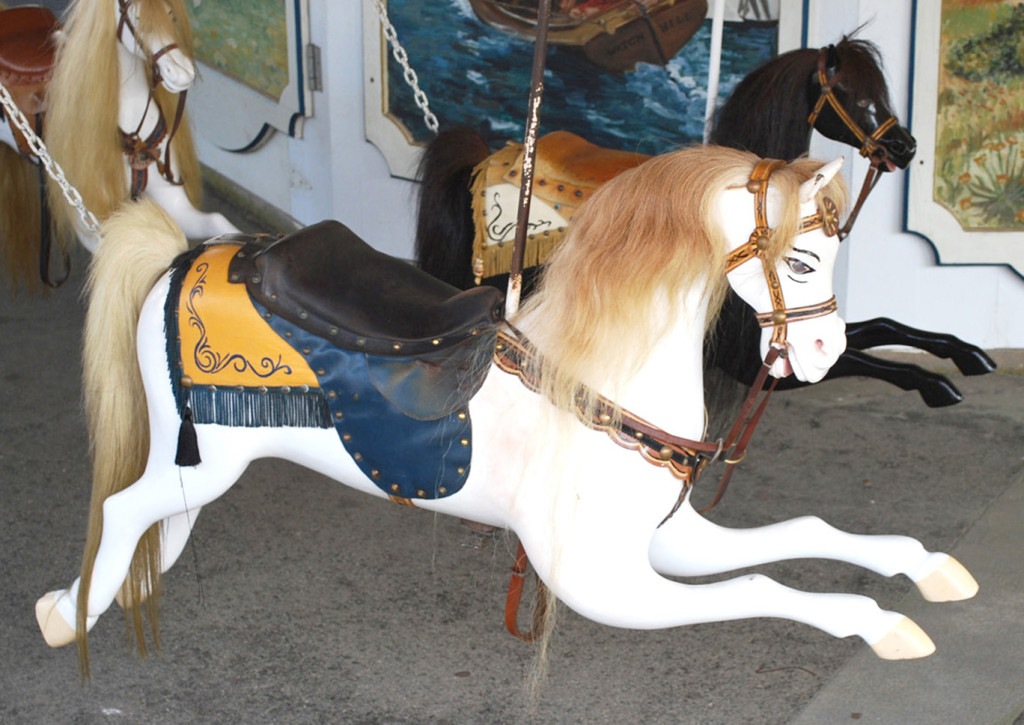
Carousel figures on the Watch Hill, Westerly Rhode Island carousel. Photo courtesy of Roland Hopkins
There is only one surviving example of a swinging carousel with no platform – the Watch Hill, Westerly, Rhode Island carousel. It has the Christian-style horses with horse hair manes and tails, padded leather saddles and leather trappings. The horses on this carousel do not match the Dare catalog description of his Swinging Carousel with no Platform horses which says they were all wood.
Carousel with a Swinging Platform
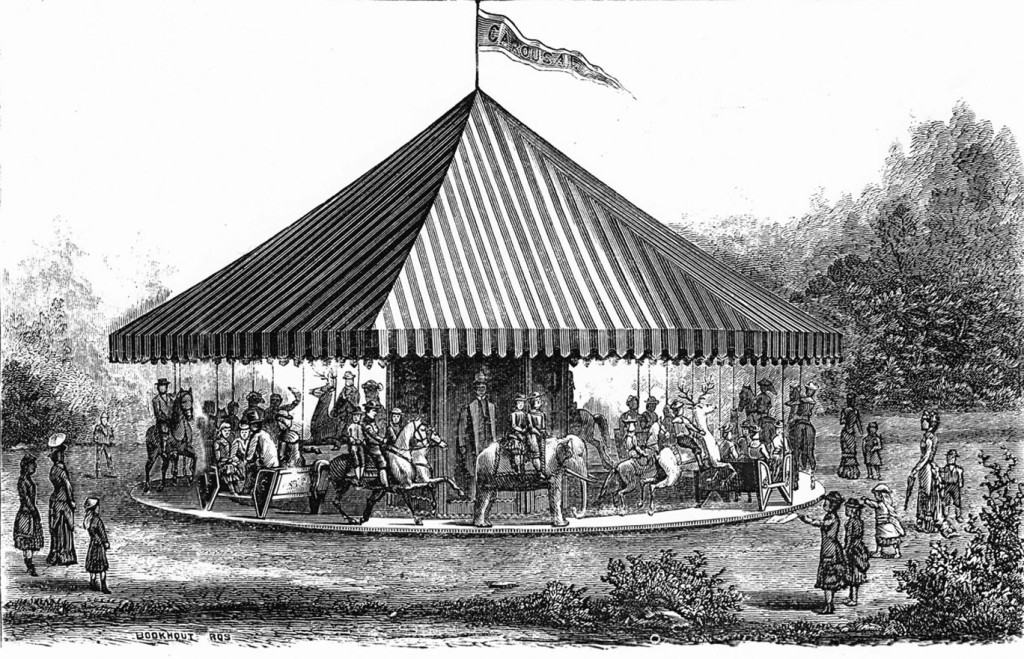
Image of Carousel with a Swinging Platform from the circa 1884 catalog by The C.W.F. Dare Company. Fred and Mary Fried Archive, American History Museum, Smithsonian
In the circa 1884 catalog, there are 5 models of this style. The smallest is 28 feet in diameter with 15 horses, 5 menagerie animals and 2 double chariots, with hand, horse or steam power. The cost was $700 to $850. The top of the line carousel with a swinging platform was 40 feet in diameter with 35 horses, 10 menagerie animals and 3 double chariots. It came with “looking glass” reflectors in the circle (center) and a steam power attachment.
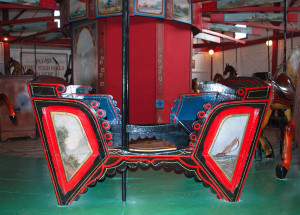
Chariot for the Carousel with a Swinging Platform as seen on the Oak Bluffs carousel. One can also be seen in the circa 1884 Dare catalog illustration. Photo courtesy of Roland Hopkins
In the New York Carousal Manufacturing Company catalog, one more model of the swinging platform carousel has been added for a total of six. The smallest is 26 feet in diameter with 16 horses in rows of 2. It cost $650. The largest is 40 feet in diameter with 38 horses, 10 menagerie animals, 3 double chariots at a cost of $2,200.
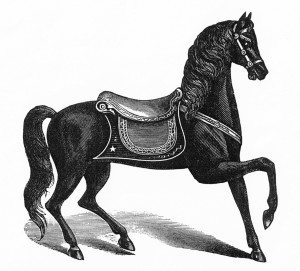
One horse style pictured in the circa 1884 catalog, reminiscent of the horses at Oak Bluffs, Martha’s Vineyard, Massachusetts. Fred and Mary Archive, American History Museum, Smithsonian.
Galloping Horse Carousel
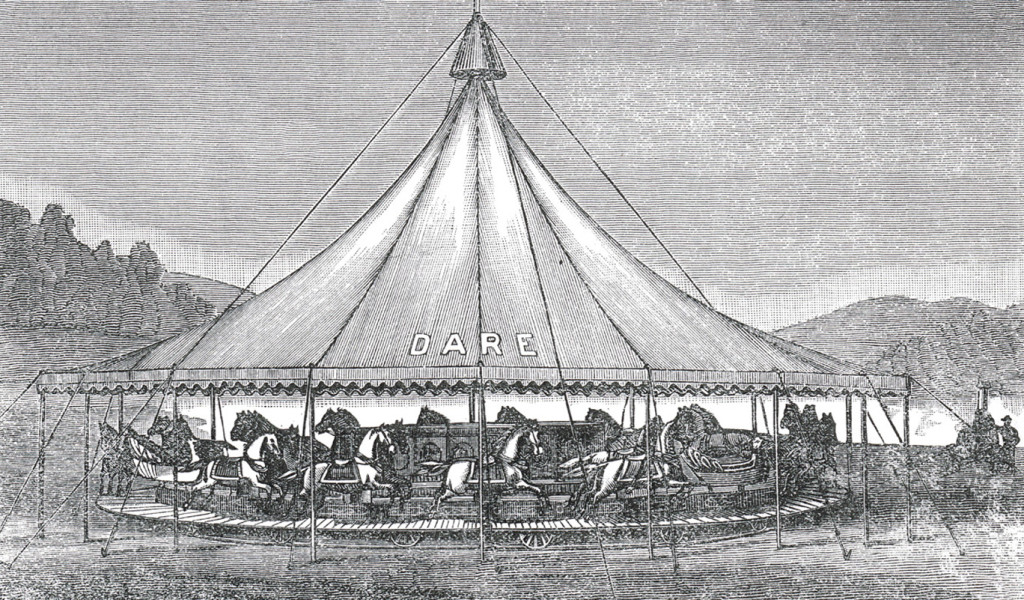
Image of a Galloping Horse Carousel. This illustration is a loose catalog page with no dating. Fred and Mary Fried Archive, American History Museum, Smithsonian
In the circa 1884 catalog, there is only a brief description of this model with no specifications or costs given. “We deem it unnecessary to describe larger Carousals, they are usually made for special places and are special in the method of construction.” “These machines require much power to drive them and cannot be made to move about easily. They are suitable for permanent positions only, where an engine can be made to drive them.”
In the New York Carousal Company catalog, 2 models of the Galloping Carousel are described – one is 32 feet in diameter with 20 horses and 2 double chariots at a cost of $1,200. The larger of the two is 40 feet in diameter with 22 horses and 4 double chariots. It cost $1,600. “We do not furnish the engine or organ. An organ of suitable volume and tone will cost, say, $175 to $350 or $400. An engine would cost $250 to $300. We will furnish the complete rig if desired.”
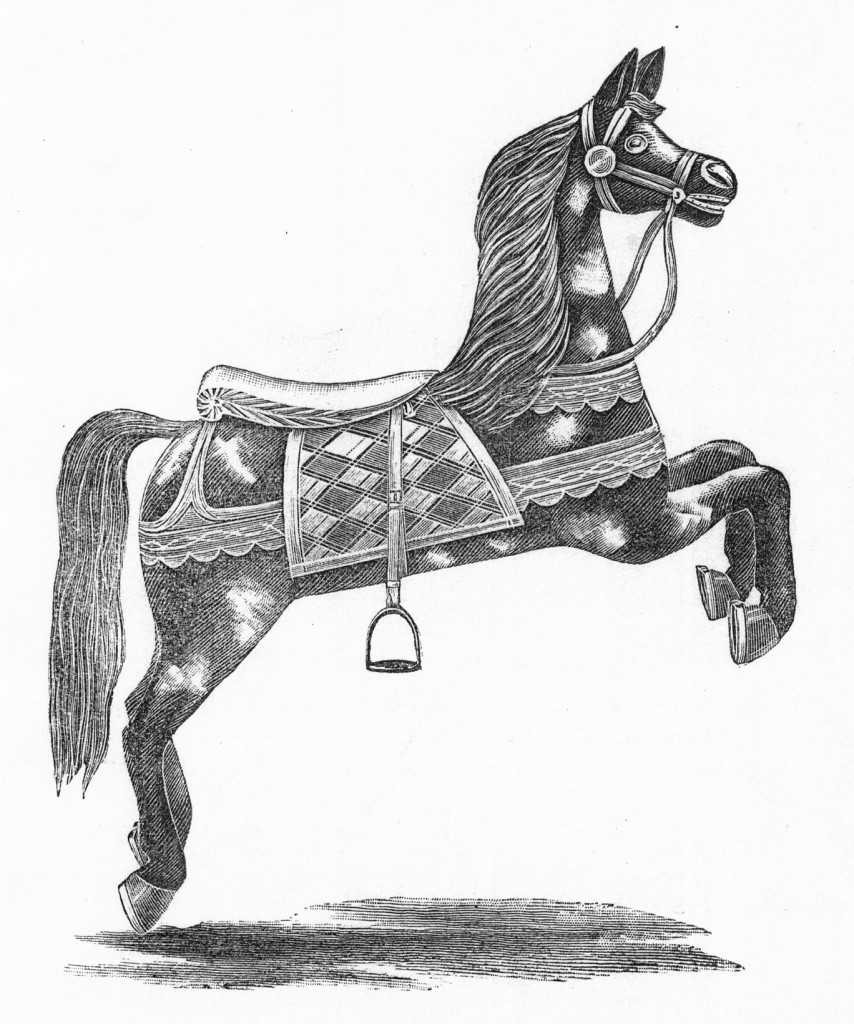
One horse style depicted in the circa 1884 Dare catalog. There are missing pages in the catalog which may have had illustrations of the Oak Bluff’s style of horse. “Brass and looking-glass ornaments or jewels added if desired.” Fred and Mary Fried Archive, American History Museum, Smithsonian
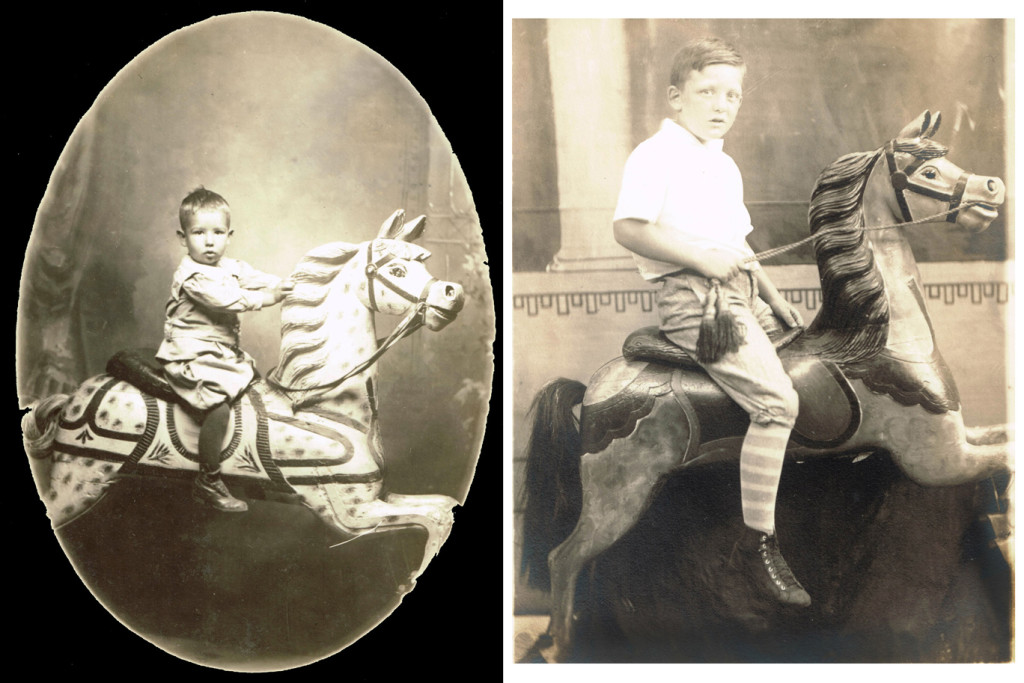
This Dare style is most commonly associated with the “Galloping Carousel” – track carousels where the horses are secured to the platform on a rocking mechanism. This style can be seen on Brenham, Texas and Albany, New York carousels. Barbara Williams collection
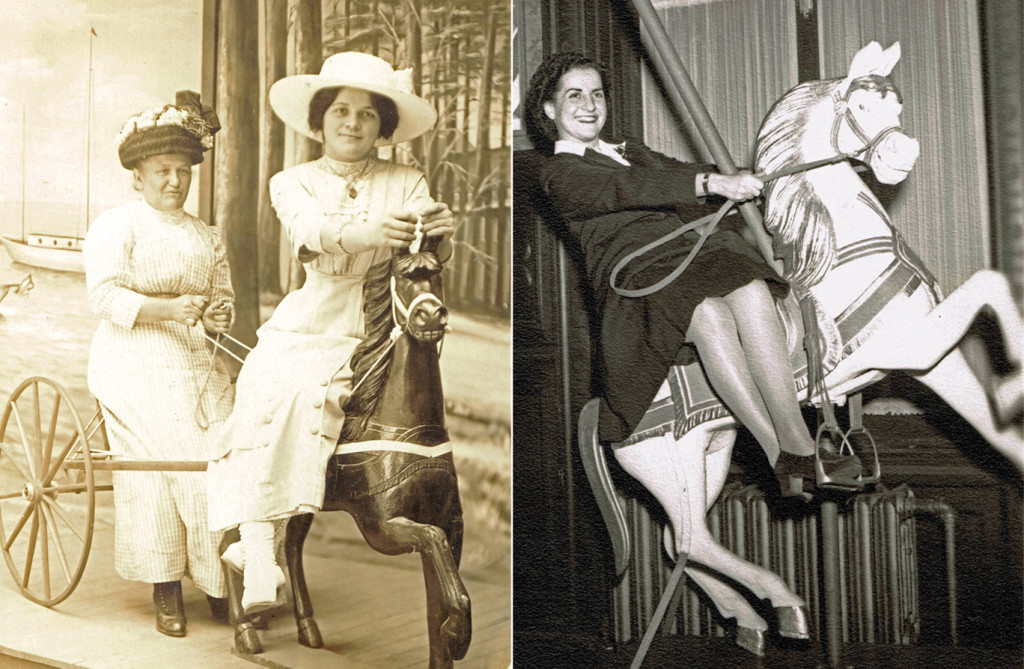
Left – The majority of Dares of this style are jumpers. Here is a rare stander. Barbara Williams collection Right – This Dare horse has a rear leg position like the horses at Oak Bluffs, MA (Swinging Carousel with Platform) with the hind hooves tipped, yet it is the other style most associated with the Galloping Horse Carousels. Barbara Williams collection
Dare Menagerie Animals
The Dare deer, lions, and the kicking jack-asses came in three sizes, described by width in inches – 10”, 12”, and 14”. The elephants and camels came in two sizes – 12” and 14”. Zebras could be made at the same cost as horses. Goats of corresponding sizes cost the same as the lions. There is a slight price range for the various sizes, describes as reflecting, “…the amount of carving or perfection of finish required.” Ornaments (jewels) could be added at a cost from $1 to $3 each. The same illustrations for the menagerie animals were used in both the circa 1884 and circa 1889 catalogs. The descriptions are from the circa 1884 catalog unless otherwise noted.
Deer
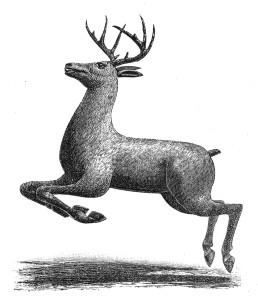
While the deer is shown unadorned, a saddle and appropriate trimming is added, according to the catalog. Prices for the 10”, 12” and 14” deer were $15, $20 and $30, respectively. Dare catalog illustration from the circa 1884 catalog by The C.W.F. Dare Company. Fred and Mary Fried Archive, American History Museum, Smithsonian
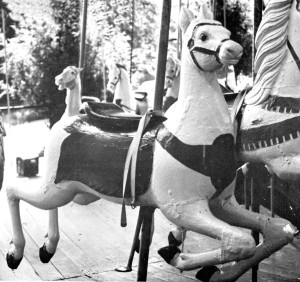
Dare deer, Birch Hill Game Farm, Patterson, New York. Photo, Judy Tuttle, Carrousel Art, Dare issue.
Elephant
The elephants are described as being…”very life-like and are very durable and are an appropriate figure for large Carousals with Swinging Platform.” The 12” elephant with full trim, Howdah, reins and stirrups cost $20 to $25 each. The 14” elephant cost between $25 and $35.
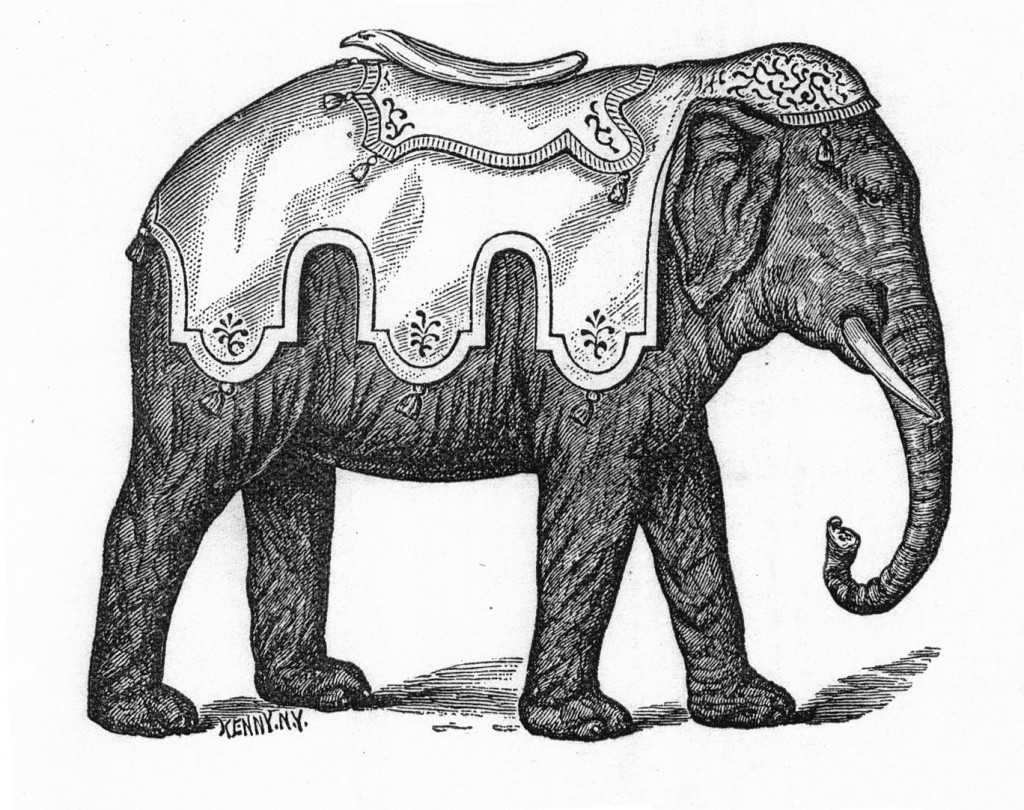
Illustration from the circa 1884 catalog by The C.W.F. Dare Company showing a 14” elephant. Fred and Mary Fried Archive, American History Museum, Smithsonian
Lions
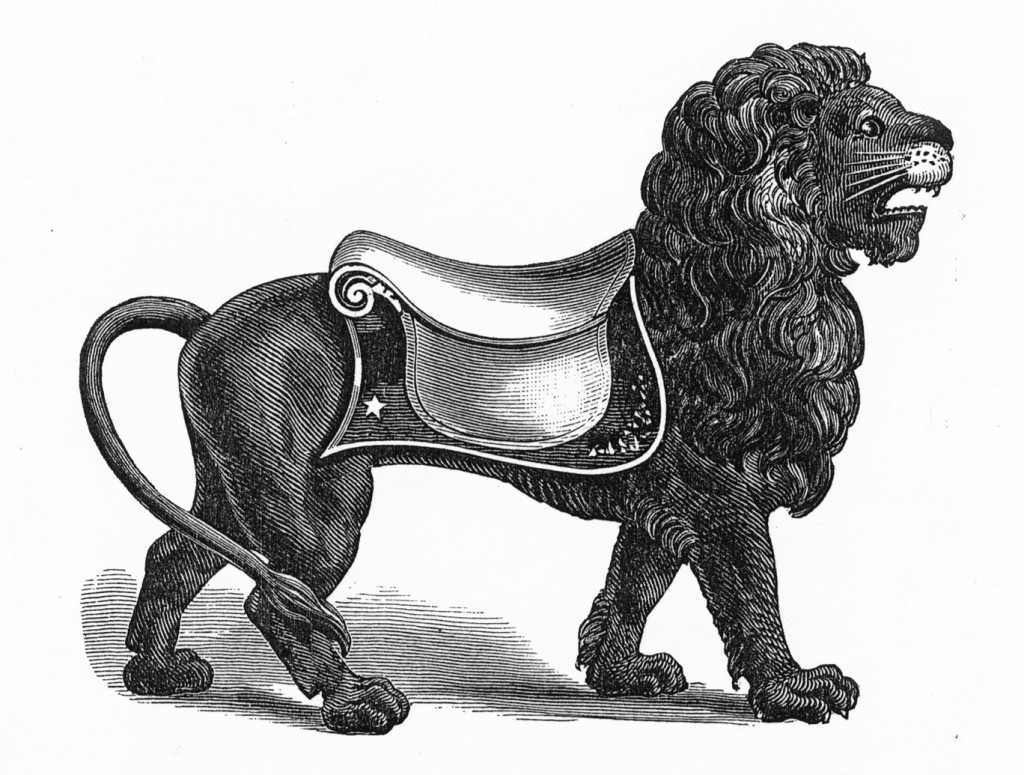
Shown here, in the circa 1884 catalog, is a 14” lion. Fred and Mary Fried Archive, American History Museum, Smithsonian
The lions “are made in a more or less expensive manner. The carving, when carefully done, requires much time; the cost, therefore, is governed by the labor expended to produce as near life-like expression as possible.” The 10” lion cost between $16 and $20. The largest, the 14” lion cost $30.
Camels
“Camels are in every way appropriate for Carousals with platforms. Like the elephant, they are historical, and make an attractive figure when associated with horses and other carousel figures in the Carousal circle. They are quite expensive when finely carved and finished with full dress. We make two sizes.” The 12” camels cost $20 to $30, the 14” camel, cost, $30 to $50.
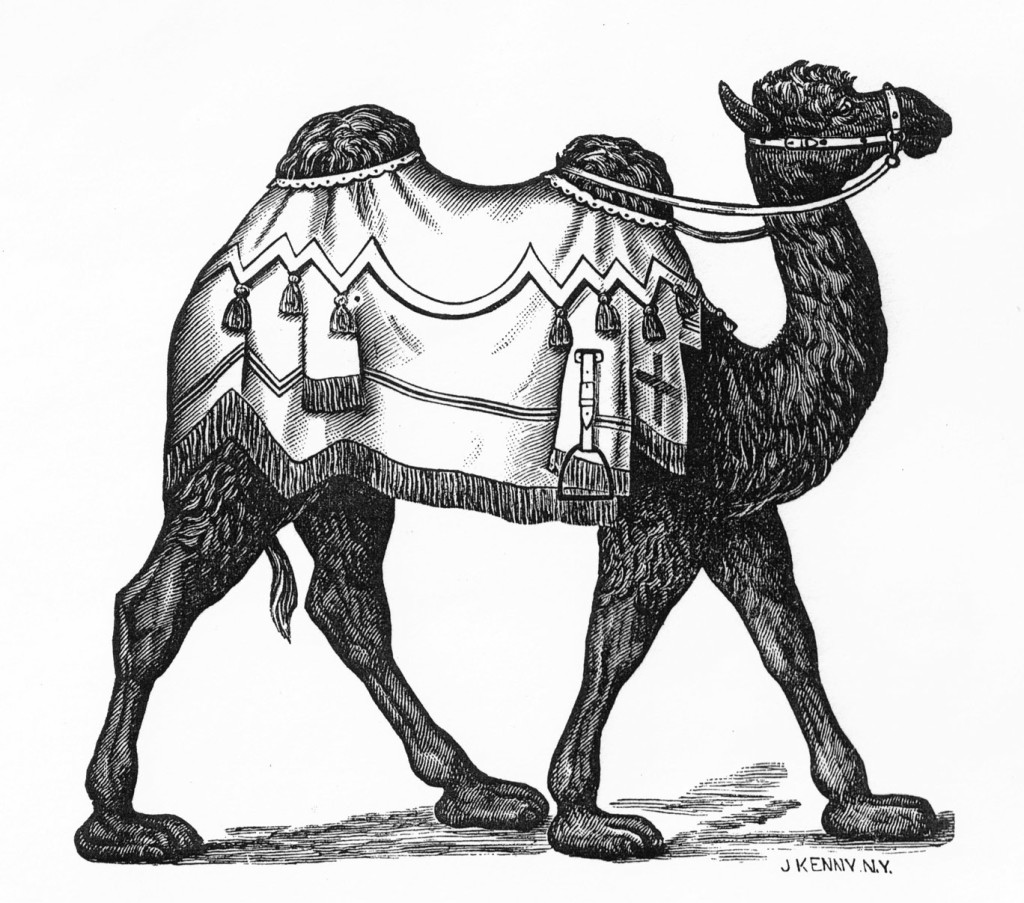
Dare’s most expensive figure was the 14” (wide) camel at a cost of $50. Circa 1884 catalog. Fred and Mary Fried Archive, American History Museum, Smithsonian
Jackass
The “Attitude” of the kicking jackass is described as being …”consistent with the popular idea of the docile temperament of this kind of animal life.” The 10” jackass cost $14 to $18 each.
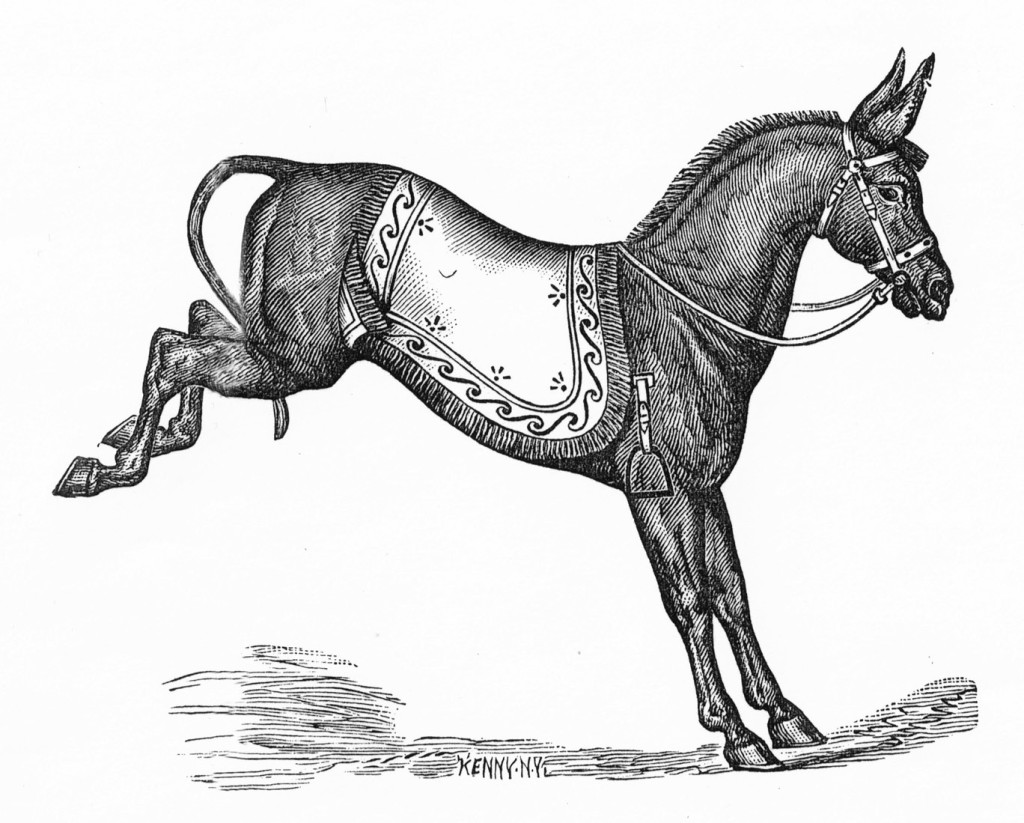
Pictured in the circa 1884 catalog is a kicking jackass. Fred and Mary Fried Archive, American History Museum, Smithsonian
Chariots, boat and accessories
Swinging Chariots for Swinging Carousels with no Platforms
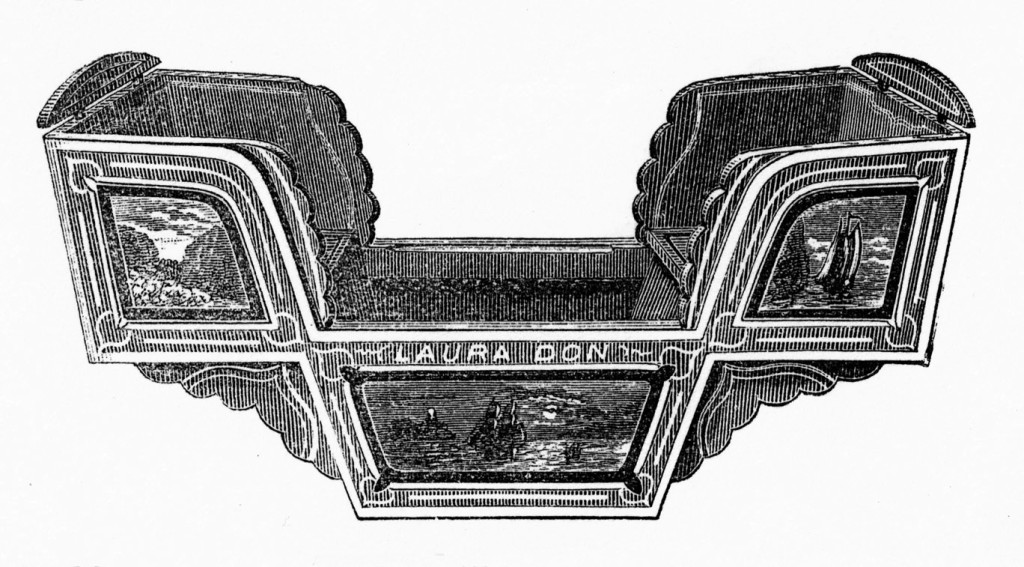
Swinging Carousel with no Platform chariot. However, one of this style is found on the Oak Bluffs carousel that has a platform. Illustration from the circa 1884 catalog by The C.W.F. Dare Company. Fred and Mary Fried Archive, American History Museum, Smithsonian
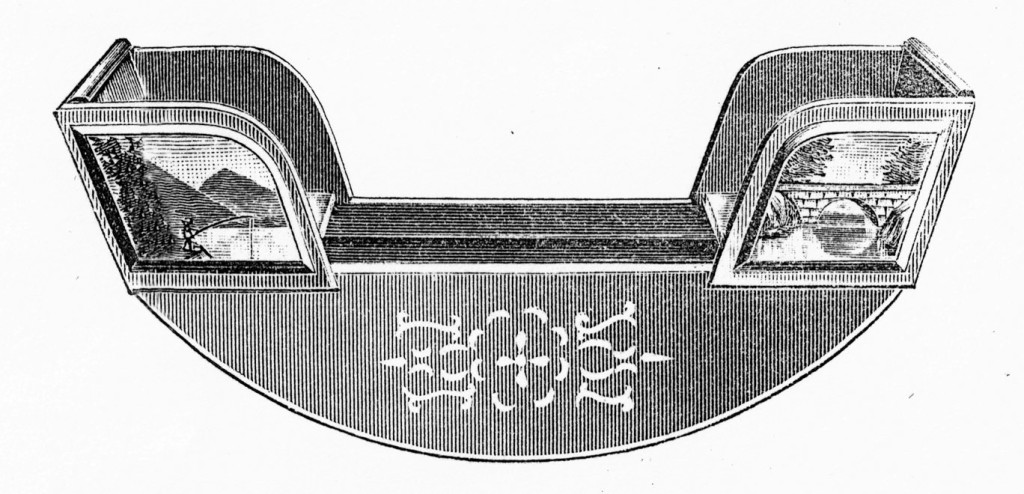
A second style Swinging Chariot was added to the circa 1890 catalog. Fred and Mary Fried Archive, American Hisotry Museum, Smithsonian
Chariots for Carousels with Swinging Platforms
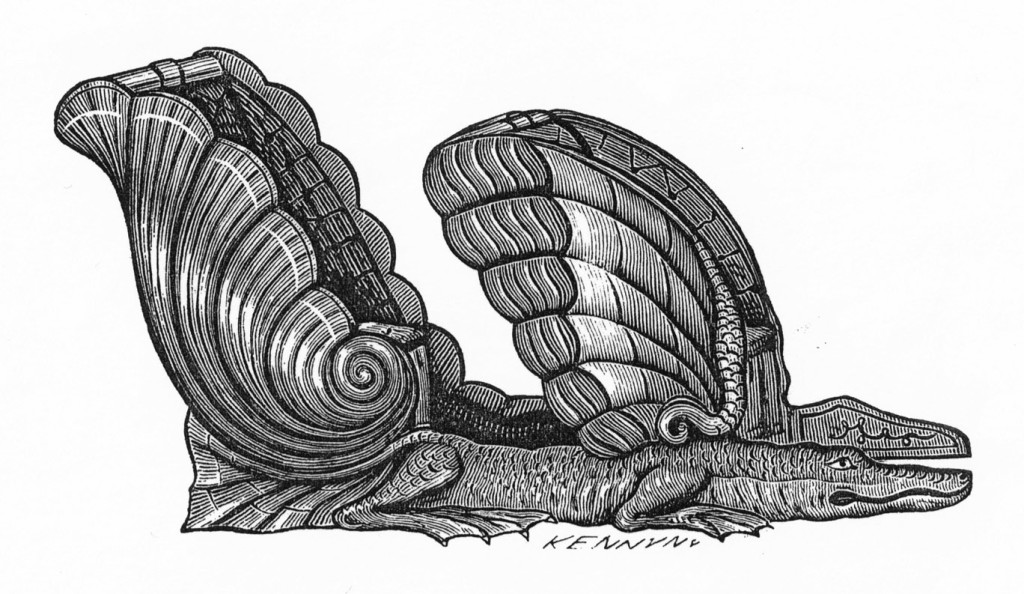
This dragon chariot from the circa 1884 catalog is described as seating four riders comfortably on upholstered seats. A chariot like this is on the Oak Bluffs, Massachusetts Swinging Platform carousel. Fred and Mary Fried Archive, American History Museum, Smithsonian
Boat for Galloping Horse Carousel
No cost is listed in the circa 1884 catalog for the boat which rocked in a motion similar to that of the horses on the galloping Horse carousal. “The machinery connection necessary to produce the motion constitutes the difference in cost between the Chariot and the Boat of corresponding finish.”
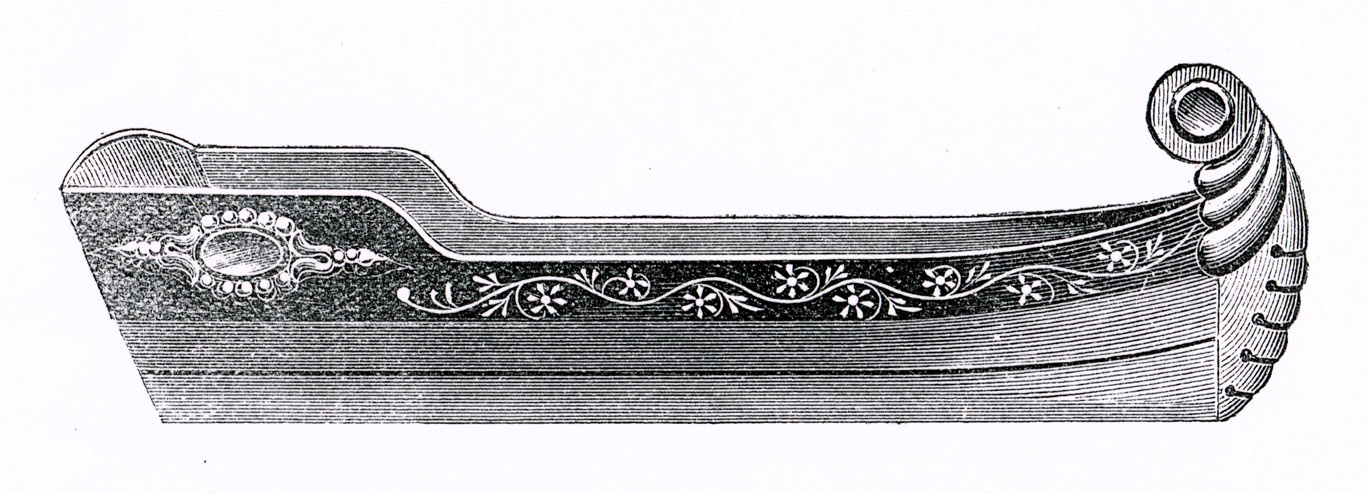
This boat chariot illustrated in the circa 1890 catalog was made for the Galloping Horse Carousel and had a motion similar to that of the horses. Fred and Mary Fried Archive, American History Museum, Smithsonian
Accessories
- Among the carousel accessories offered in the circa 1890 catalog is a Trumpet, Piccolo and Bass Trombo organ with a price range of $550 to $750. The flags started at $3.50 for a 4 foot flag up to $60 for a 35 foot flag. The carousel tents cost between $40 up to $235.
As described in Dare’s catalogs, any kind of animal, bird, etc., could be ordered, costing more than horses depending on the amount of carving required. Chariots of any design could be made, including imposing Roman chariots. Smaller horses were available with enameled cloth or leather saddles – any color or quality. The Carousel with Swinging Figures came with an engine, organ, awning and a tent covering. The Carousel with Swinging Platform could accommodate Dare’s Tally-Ho carriages, settees, chairs and velocipedes. The Galloping Horse carousel came with flags, spears, rings and a ring box. Additional carousel accessories are pictured in his catalogs.

